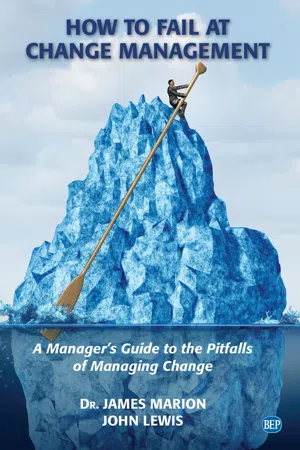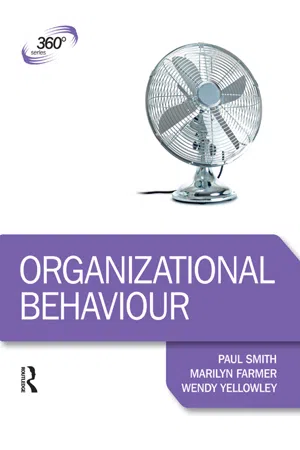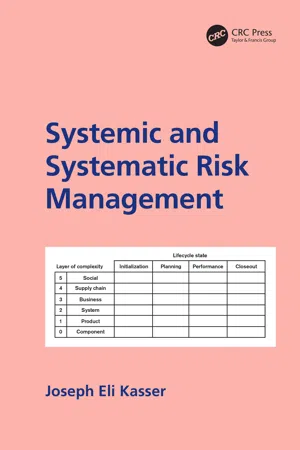Business
Kotter's Change Model
Kotter's Change Model is a framework developed by John Kotter to guide organizations through successful change management. It consists of eight steps, including creating a sense of urgency, forming a powerful coalition, and communicating the vision for change. The model emphasizes the importance of engaging employees and maintaining momentum to achieve lasting transformation within an organization.
Written by Perlego with AI-assistance
Related key terms
Related key terms
1 of 4
Related key terms
1 of 3
10 Key excerpts on "Kotter's Change Model"
- eBook - ePub
Dynamic Management and Leadership in Education
High Reliability Techniques for Schools and Universities
- Anthony Kelly(Author)
- 2021(Publication Date)
- Routledge(Publisher)
Education managers should avail of every opportunity to open communication networks within and without the school or university for the benefit of staff, no matter how counter-intuitive it might seem to encourage what appears at first sight to be frivolity. The meta-skill of learning how to learn, which transforms ‘experience’ into ‘learning’, is a skill that is very difficult to transfer among colleagues, so despite the fact that every instance of non-directive communication entails some loss of structure, principals and deans should strive not to curtail involvement, but to steer it. Otherwise, there can be no sharing of vision and therefore no leadership, only management.Kotter’s Change model
The Change Quadrants model is often used in combination with Kotter’s Change model, which is based on eight identifiable phases of change (Kotter, 1990 , 1996 , 2002 ). Kotter distinguished between the leadership of change and the management of change. The latter is essentially a set of processes that keep a holistic system of people and processes running smoothly; the former creates a vision, aligns employees with that vision, defines the future for the organisation and inspires people to buy into it (Van den Berg & Pietersma, 2016). The Kotter Change model suggests that the most common pitfalls are being too complacent, failing to create a coalition in support of change, not having a clear enough vision and failing to communicate that vision, failing to create short-term wins and not embedding the change in the culture of the organisation. The model’s eight phases are:- The first phase is aimed at creating a sense of urgency to eliminate complacency. Managers should eliminate any false sense of security.
- The second phase is to create a coalition to support the desired change across the school or university. Members need to recognise the value of the proposed change, trust and commit to achieving it, and have the credibility, skill and formal authority to lead others in pursuit of it.
- The third phase is to develop a clear vision, provide a sense of direction and align everyone’s efforts.
- The next phase is to share that vision, communicating it consistently to everyone.
- The fifth phase is to empower tutors and researchers to overcome the inevitable obstacles. The idea is to get everyone to participate in the effort to implement change.
- The next phase is to ‘secure short-term wins’ (Van den Berg & Pietersma, 2016) to encourage staff towards greater directed effort. Short-term wins should be visible, unambiguous and linked like stepping-stones to the desired change in the minds of those working in the organisation.
- Maureen Rhoden, Brian Cato(Authors)
- 2017(Publication Date)
- Wiley-Blackwell(Publisher)
Kotter (1996) argued that successful and effective change may be the result of a coalition of leadership roles at different levels within the organisation which changes and evolves over time. Kotter’s model highlighted the importance of having a change team in place with a mix of leadership and management skills order to achieve successful change.Kotter’s model acknowledges that change may not always go as planned and that managers can also make many mistakes when attempting to implement a change strategy. He broke down the processes of change into three stages:- Set up – which involves the need for change, developing teamwork and a vision.
- Roll out – this stage is where the communication strategy, employee participation and evidence of short term wins becomes important.
- Follow through – any barriers or employee resistance are removed and the new norms and behaviours become a part of the organisation’s culture.
In order for a change strategy to work successfully, Kotter (1996) emphasises that leadership throughout the organisation is required in order to overcome any barriers leading to transformational change while managers help to keep the process under control.Kotter (2012) has updated his model to include what he sees as the eight accelerators which are based on a sense of urgency for change due to an opportunity in the market:- Create a sense of urgency based on a single big opportunity.
- Create and sustain a coalition to guide the change.
- Develop a strategic vision and change strategies which will make the most of the big opportunity.
- Communicate the new vision and strategy to staff to generate commitment.
- Ensure that a network of volunteers is in place to remove any barriers.
- Promote visible short term wins.
- Keep going and learn from any mistakes made during the process.
- Ensure that the changes become part of the culture of the organisation.
- eBook - ePub
How to Fail at Change Management
A Manager's Guide to the Pitfalls of Managing Change
- James Marion, John Lewis(Authors)
- 2020(Publication Date)
- Business Expert Press(Publisher)
The Lewin framework expresses what is observed in common-sense thinking about managing change. Change must begin, it must be carried out, and the change must become a way of life. While the Lewin framework provides a structured path to follow when initiating and managing change, the phases are expressed in a compact form and require elaboration by any given manager. Presumably, effective managers could successfully employ Lewin, whereas others, following the same three phases, could easily fail and often do. It appears from inspection of the process that the Lewin framework could emerge from a common-sense consideration of what ought to happen within a change management scenario. Further, the three steps in the Lewin framework could be viewed as phases or categories of activities. Change managers could take this and develop a project around it. This could be done by identifying the desired deliverables from “unfreeze,” “change,” and “refreeze” followed by populating a schedule with activities and resources.Kotter’s Eight-Step Change Model The Kotter’s change model provides detail and structure far beyond the three-phase Lewin model. The eight steps are as follows:- Create urgency
- Create a coalition
- Develop a vision and strategy
- Communicate the vision
- Empower action
- Get quick wins
- Leverage wins to drive change
- Embed in culture
An examination of the Kotter model suggests similarity with both a common-sense approach and the Lewin model, albeit with additional detail. Steps 1 to 4 appear to relate to preparing for change, “unfreezing,” and reducing the uncertainty in the organization. Steps 5 to 7 involve carrying out the change by aiding the organization in getting things done while attempting to create a positive spiral of success. The implementation of change begins with things that can be accomplished quickly so that successes can raise the energy level and work to minimize the resistance to change. The thinking here is that resistance to change can be expected to decrease if positive results are observed by the stakeholders involved in change. Finally, new systems and processes are institutionalized by embedding the change in the culture, or in Lewin’s terminology, “refreezing.” “Embedding in culture” need not be a top-down effort from outside of the organized. Instead, it could be something that emerges from the practice of new processes, policies, and practices over time. In fact, this is known to occur in companies that exhibit an emergent strategy and culture rather than one dictated from the leadership level of the firm (Figure 1.3 ).Figure 1.3 Kotter’s eight-step modelSource: Kotter (2012).Observations on KotterThe Kotter model provides some interesting guidance to the manager. The first key point is that of urgency. It is observed that change leads to uncertainty and resistance that must be overcome by the change manager. Kotter makes the point that managers must not only answer the question of “Why change?” but also “Why change now - eBook - ePub
The 8 Steps to Strategic Success
Unleashing the Power of Engagement
- Gerben van den Berg, Paul Pietersma(Authors)
- 2014(Publication Date)
- Kogan Page(Publisher)
In his books (1990, 1996, 2002), Kotter makes a clear distinction between management and leadership in change. To him, management is a set of activities that keeps a complex system of people and technology running smoothly. Leadership, on the other hand, is what defines the future (gives a vision) and gets people lined up for that vision and inspired to pursue it. The eight phases of change model provides a systematic instrument for taking leadership in change. It enables a company to instil lasting changes in the organization, avoid (possibly) fatal mistakes and get people inspired. Execution Kotter emphasizes the importance of not skipping any of the eight phases. For lasting change, an organization has to go through all eight. The phases are: Create a sense of urgency. To address complacency, it is important that false signs of security are removed. Management must ensure that people feel a sense of urgency because of an (impending) crisis and that they are convinced that continuing as usual is no longer acceptable. Appoint a change team. A strong coalition is needed to create change in an organization. The members of this group must appreciate the value of the proposed change and realize that they need to obtain trust and commitment from the people in the organization. Furthermore, they should be credible and have the skills, connections, reputation and formal authority to demonstrate leadership in change. Have a clear vision. Vision is a key element in successfully realizing change. Vision, according to Kotter, is the bridge between existing and future conditions. When implementing a new strategy, this vision should thus already be clear: it portrays the new strategy and why the organization wants to take on that strategic direction. A clear vision is then instrumental in giving a sense of direction for the desired change and in aligning activities - eBook - ePub
Human Resource Management for Organisational Change
Theoretical Formulations
- Paritosh Mishra, Balvinder Shukla, R. Sujatha(Authors)
- 2021(Publication Date)
- Routledge(Publisher)
The reason for effectiveness in applicability of Lewin’s model is that, the model not only offers suggestions on how changes can be brought about, but also depicts how changes adopted can be maintained and continued to be pursued for further organisational development. Lewin’s was one of the first theories to recognize that change is a constant which is relational and happens through interaction. In today‘s world of uncertainty, Lewin’s theory provides a premise to perceive and cope with uncertainty as a source of change, which, at the crux of it, is what Lewin meant by the process of ‘unfreezing’ (Van Nistelrooij, 2018). John Kotter's Eight Step Model Over the past decades, companies have been trying to build their organisations by reinventing organisational structures. The underlying fundamental facet of this reinvention is to change the way business is conducted. One of the most popular models for planning, implementing, and sustaining this change is the ‘Eight-Step Change Model’ introduced by John Kotter (Kotter, 1995). The model investigates the change in organisations in eight steps. ‘ Establishing a sense of urgency’ refers to the need to examine market and competitive realities (Kotter, 1995) on an emergent basis. This helps in identifying and discussing crises and solving them to create greater opportunities. Bold actions, characteristic to a strong leadership, are normally vital for creating a strong sense of urgency (p. 43). Kotter (1995) further espouses that leaders must communicate this information “broadly and dramatically”. Kotter (1996, p. 44) recommends the use of consultants as a tactic for crafting a sense of urgency and challenge the status quo. Armenakis, Harris, and Mossholder (1993) strengthen Kotter’s statement by suggesting the recruitment of sources outside the organisation. An analytical report compiled by a consulting agency can be used as an instrument to add believability to the need for change - eBook - ePub
- OD Network, John Vogelsang PhD, Maya Townsend, Matt Minahan, David Jamieson, Judy Vogel, Annie Viets, Cathy Royal, Lynne Valek(Authors)
- 2015(Publication Date)
- AMACOM(Publisher)
Table 53.2 ), it can be difficult to gain perspective on over-arching themes represented in the literature. In relation to the organizational development professional’s role, while the change process may move through progressive stages, the actual action steps must be managed in groups, with subprocesses addressed simultaneously. For example, leadership skills, behaviors, and actions are important in stage 1, but equally significant in the other seven stages. An organizational development professional would recommend projects that address leadership characteristics across all stages, developing training or coaching interventions that (a) improve language choice (Brower, 2007), (b) bring awareness to employee antecedents impacting receptiveness to change (Van Dam et al., 2008), and (c) provide practical action steps for communicating expected change results and measurements from the beginning (Cowley, 2007). Essential enhancements to the Kotter framework, as drawn from the research review, will thus be discussed through the lens of stakeholder groups. The three identified stakeholders are leadership (senior, middle, and front-line managers); employees (followers); and the organization (system).Enhanced Action Steps: LeadershipAn important insight for leadership (see Figure 53.1 for summary) is the acknowledgment managers have the most impact in generating change management success. From communicating the vision, modeling new behaviors, and signaling support for change, to rewarding employees for innovation and improvisation, to building employee engagement—managers carry the keys to unlock the benefits of transformational change. Organizational development professionals should devote considerable energy to the design of corporatewide development tools and measures that proactively develop core change management competencies.These skill sets and behaviors include:1. Communicating specifics regarding expected change process results, including how performance will be measured, what resources will be committed, and projected employee changes (Cowley, 2007).2. Using “building up” and “breaking down” language (Brower et al., 2007, p. 69) to generate understanding and commitment, where establishing understanding is the first priority. Breaking down language means negating information no longer relevant or functional, then promoting disengagement from outdated commitments (Brower et al.). Building up language includes emphasizing information directly relevant to the new vision, then “affirm[ing] the [company’s] mission and inspir[ing] commitment to it” (2007, p. 69).FIGURE 53.1 Recommended Enhanced Action Steps to Kotter Model, Grouped by Stakeholder3. - Shahron Williams van Rooij(Author)
- 2017(Publication Date)
- Routledge(Publisher)
Lewin’s conceptualization of change as a process and his 3-Step Model served as the basis of four well-known models that recommended a series of stages or phases for change agents to follow in implementing change. The Judson model (1991) postulated five phases of change implementation, namely: analysis and planning, communication, acceptance, changing to a desired state, and consolidation and institutionalization of the new state. The model included recommendations for overcoming resistance to change, such as alternative media, reward programs, bargaining, and persuasion. Kotter (1995) proposed an eight-step model for transformational change: (a) establish a sense of urgency by relating environmental conditions to challenges and threats to the organization; (b) form a powerful guiding coalition of individuals who firmly believe in the need for change and can inspire others to support change efforts; (c) create a vision of the desired end-state; (d) communicate the vision through multiple channels, (e) empower others to act by changing policies, procedures, systems, and structures in ways that will facilitate the implementation of change; (f) plan and create short-term wins by publicizing successes to build momentum; (g) build on the change and consolidate improvements; and (h) anchor the changes in corporate culture to sustain the new state. Unlike the Judson or Lewin models, the Kotter model focused on high-level executives seeking to lead transformational change and, as such, is not a good fit for change projects that are not transformative.A third model in the Lewin tradition is Galpin’s (1996) nine-wedge wheel model comprised of (a) establishing the need to change; (b) developing and disseminating a vision of planned change; (c) diagnosing and analyzing the current state; (d) generating recommendations; (e) detailing the recommendations; (f) pilot testing the recommendations; (g) preparing the rollout of the recommendations; (h) rolling out the recommendations; and (i) measuring, reinforcing, and refining the change. Central to Galpin’s model is an understanding of organizational culture as evident in rules and policies, norms, events, rewards, and recognition. Armenakis, Harris, and Fields (1999) focused on change messaging as a mechanism for facilitating change readiness and minimizing resistance to change, on the one hand, and facilitating adoption and institutionalization of the desired change, on the other hand. The change message should include the need for change, affirmation of the capability to change, the benefits of change, identification of those driving the change, and evidence that the change is right for the organization.- eBook - ePub
- Paul Smith, Marilyn Farmer, Wendy Yellowley(Authors)
- 2013(Publication Date)
- Routledge(Publisher)
Separating external factors from internal triggers for change may be artificial. Hughes (2006) discusses the lack of consensus about what triggers change and suggests that this will differ according to the context. For example, the demands by the UK government and media on tackling the growing obesity problem is an external driver for companies making chocolate, which have to respond by considering internal change, such as the production of reduced-size chocolate bars and altering the ingredients.If we consider all the changes listed above, many of them relate to changing people and their attitudes and behaviours, which, according to Balogen and Hope Hailey (2008: 2), often requires a ‘significant investment in terms of managerial time and energy as well as financial investment’. From our discussion of culture, we know that people act and behave in an organization in set ways, forming the cultural ‘glue’ that establishes how things are done, but in these dynamic and uncertain times, this glue sometimes needs to be loosened to allow the organization to do things in a different way and respond to changing market conditions.The Managing Change Survey conducted by IRS Employment Review (2010) asked 114 different organizations what type of change they were implementing. Interestingly, 80 per cent of respondents were embarking on cultural change programmes in an effort to change cultural values and leadership. Research by the CIPD (2010), however, suggests that less than 60 per cent of change initiatives involving restructuring the organization achieved the anticipated outcomes. Much has been written about the management of change, and in the next section we will explore some of the academic change models and company practices to illustrate the sorts of challenges that are faced.9.5 Change models
KEY TERMChange models:these are frameworks designed to allow a systematic analysis of a change situation.Two famous, but much criticized, models of change were put forward by the psychologist Kurt Lewin (1890–1947) in 1947. Lewin was particularly interested in how people responded to change, and how patterns of attitudes and behaviours required attention during the change process. One model that he proposed was the three-step model of change (see Table 9.3 - eBook - ePub
- Joseph E. Kasser(Author)
- 2020(Publication Date)
- CRC Press(Publisher)
Scientific HTP):- The Kurt Lewin CM model discussed in Section 4.7.1.1 .
- The Kübler-Ross model discussed in Section 4.7.1.2 .
- The 7S framework for organization change discussed in Section 4.7.1.3 .
- Checkland’s soft systems methodology discussed in Section 4.7.1.4 .
- The Satir change model discussed in Section 4.7.1.5 .
- The William Bridges transition model discussed in Section 4.7.1.6 .
- The Burke-Litwin change model discussed in Section 4.7.1.7 .
- Kotter’s 8-step change model discussed in Section 4.7.1.8 .
- The Nudge theory discussed in Section 4.7.1.9 .
- The ADKAR® CM model discussed in Section 4.7.1.10 .
The Kurt Lewin CM model is a simple three-state theory of change commonly referred to as unfreeze, change and freeze (or refreeze) (Lewin 1947), where:4.7.1.1 The Kurt Lewin CM Model
- Unfreeze : the state of getting ready for the change. This state includes the planning sub-states of deciding:
- If the change should be made.
- When the change should be made.
- How the change should be made.
- Overcoming the initial resistance to change by motivating people to desire or at least acquiesce to the change.
- Change : the transition process from the undesirable situation to the feasible conceptual future desirable situation (FCFDS) (Section 5.1.7.2 ).
- Refreeze : the state of establishing stability in the new changed situation. This is the stage in which the changed situation becomes the new normal situation.
The Kübler-Ross model is a notional five-stage model for the emotional reaction to changes due to an event such as death and serious trauma (Kübler-Ross 1969). The five stages are:4.7.1.2 The Kübler-Ross Model
- eBook - ePub
- Josef Langer, Niksa Alfirevic, J Pavicic(Authors)
- 2017(Publication Date)
- Routledge(Publisher)
He considers the amount of change that can be defined as a result of multiplying (a) the amount of dissatisfaction with the status quo, (b) strength of vision describing the possible future and (c) quality of the process used in managing change. The magnitude of change should exceed the price of change to be paid by an individual. In other words, individuals should perceive the outcomes and the process of change (‘price to be paid for change’) as more acceptable than sustaining the status quo. The other group of change management models is based on the assumption that the change process, no matter how different the organizations are, has some common patterns. Therefore, it is possible to derive a more general model, applicable to a wider range of social situations and contexts. One of the most popular theories of organizational change was proposed by Kurt Lewin 11 in the 1950s. He speaks in favor of changing group behavior rather than promoting individual change, based on the assumption that an intervention in the social structure of the group produces a significant change of its individual members. The success of such intervention depends on the delicate balance between two social forces: (a) those heading toward modification of behavior (‘forces of change’) and (b) those aiming to preserve the status quo (‘forces of stability’). For instance, in the case of CEE societies joining the EU (Slovenia, Czech Republic, Slovakia, Hungary, etc.), (a) could stand for actions/influence made by those societal entities oriented toward ‘Europeanization’ and acceptance of the new, broadened environment
Index pages curate the most relevant extracts from our library of academic textbooks. They’ve been created using an in-house natural language model (NLM), each adding context and meaning to key research topics.
Explore more topic indexes
Explore more topic indexes
1 of 6
Explore more topic indexes
1 of 4









